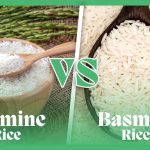Step aside quinoa and Brussels sprouts, there’s a new superfood in town- Sago. As we move into the world of nutrition while discovering the lesser-known nutrient-dense foods, the resilient sago emerges as a timeless wonder.
This nutrient-rich starchy delicacy offers tons of essential vitamins, minerals, and dietary fiber, rendering it a mighty addition to our diet. Join us as we unlock the countless nutritional mysteries of these miniature pearls!
What is sago?
Also known as sabudana in Hindi, sago is a type of starch extracted from the spongy center of tropical palms such as Metroxylon sagu, native to Indonesia. They are small, bead-like balls readily available in the market and are a good source of starches. They vary in size from 2-4.5 mm, while mature sago palms are nine meters tall.
Sago is a good choice in times of natural disaster due to its resilient nature against rough environmental conditions. It is the primary food choice for the southwest Pacific area, where it is used to prepare cakes, puddings, and soups.

Nutrient composition:
Sago is a rich source of a type of carbohydrate called starch 100 grams provides 88.7 grams of carbohydrates and 358 calories of energy. Apart from carbs, sago is an inadequate source of other macronutrients such as proteins, fats, and dietary fiber.
Among micronutrients, sago is a good source of calcium, iron, zinc, and some of the B vitamins. Sago is a gluten-free and grain-free starch that is suitable for individuals with celiac disease.
| Nutrients (100 g) | Amount |
|---|---|
| Water | 11 g |
| Energy | 358 kcal |
| Protein | 0.19 g |
| Total fats | 0.02 g |
| Carbohydrates | 88.7 g |
| Dietary fiber | 0.9 g |
| Total sugars | 3.35 g |
| Minerals | |
| Calcium | 20 mg |
| Iron | 1.58 mg |
| Magnesium | 1 mg |
| Phosphorus | 7 mg |
| Potassium | 11 mg |
| Sodium | 1 mg |
| Zinc | 0.12 mg |
| Copper | 0.02 mg |
| Manganese | 0.11 mg |
| Selenium | 0.8 µg |
| Vitamins | |
| Thiamine | 0.004 mg |
| Panthotenic acid | 0.135 mg |
| Vitamin B6 | 0.008 mg |
| Folate | 4 µg |
| Other nutrients | |
| Choline | 1.2 mg |
Role in human nutrition:
The spherical pearls of sago offer tons of health benefits to the body. Some of them are discussed ahead:
Rich energy source:
Starch is considered a high-energy source in the human diet, among which sago is the highest starch producer in the world. The starch of the sago is absorbed and metabolized into glucose, a preferred energy source for the biochemical functions in the cells and tissues. It is a perfect food for post-exercise and a long fast as it provides instant energy and replenishes your body to prevent fatigue and dizziness.
Moreover, sago is a good source of resistant starch, a starch type that passes undigested through the stomach and small intestine and feeds your healthy gut microbiota. Resistant starch provides tons of benefits to the human body such as lowering blood glucose, bile formation, and cholesterol levels, improving digestion, preventing cancer, inhibiting fat accumulation, and promoting mineral absorption (1).
Beneficial for celiac diseases:
Celiac disease is an auto-immune condition characterized by malabsorption of protein gluten in the small intestine mainly found in wheat, barley, and rye. The small intestine damage causes symptoms like diarrhea, fatigue, gas, and weight loss. One solution to manage the celiac symptoms is opting for a gluten-free diet.
Sago, a gluten-free food, can be easily substituted for wheat in everyday diets, especially in Indian diets, where wheat chapattis are the staple food.
Improves digestion:
Resistant starch in sago, a starch type, acts as a soluble dietary fiber by staying intact in the stomach and small digestion. Resistant starch is fermented in the colon into short-chain fatty acids by the gut microbes and aids in digestion by promoting gut health, improving bowel movements, adding bulk to stool, and enhancing nutrient absorption.
Promotes fetus growth:
Sago is a reliable source of essential B vitamins folate and vitamin B6, so including it in the diet of pregnant mothers may promote fetal growth and help in the development of the brain.
Furthermore, the iron and calcium content of the sabudana is beneficial in promoting milk production and balancing hormonal activities in pregnant and lactating mothers. It also protects the newborn babies from neural tube defects. Besides that, including sago in everyday diet may improve iron levels in people with iron deficiency anemia.
Improves bone health:
Sago, abundant in calcium, is essential to strengthen bones in children and adults. For menopausal females, consuming sago may also improve bone density and prevent arthritis and osteoporosis.
Improves heart health:
Regular consumption of sago may be beneficial for individuals with heart ailments. Blood pressure, a risk factor for heart disease, can be lowered by consuming sago owing to its good amount of potassium. The no cholesterol content of it also renders it suitable for people with heart diseases.
The abundance of resistant starch and B vitamins improves the HDL (good) cholesterol and lowers the LDL (bad) cholesterol, which prevents the accumulation of plaque in the arteries, hence improving cardiovascular health.
Beneficial for babies:
Due to its high starch content, sago is the ideal solid food for children to meet their daily nutrient requirements. Sago is considered the perfect first food choice for your child due to its numerous health benefits, best among all is its high carbohydrate content.
It is an energy-providing food that guarantees healthy weight gain in growing kids, helps in their routine development, and can be a perfect complementary food starting from six months of age. It is an easy-to-digest and soft food, gut-friendly, and supports growth and development in children.
Furthermore, sago is an excellent summer food as it helps regulate the body temperature and promotes satiety.
Boosts nervous system:
Consuming the spherical white pearls of sago can help boost the nervous system by activating the brain’s memory centers and relaxing the mind. Although sago is not a rich source of proteins, the amino acid tryptophan maintains the neurotransmitter serotonin levels. Serotonin helps reduce anxiety and insomnia, elevates mood, and promotes sleep.
Sago for skin:
Incorporating sago in skin care has exhibited countless health benefits, from reducing hyperpigmentation to providing clear skin. Applying a mask of soaked sago in milk and honey removes suntan, UV damage, and uneven skin tone. The amino acids and antioxidants in sago give the skin a clear and flawless finish, conceal fine lines, and boost collagen. Moreover, a face pack of sabudana tightens the skin, reduces acne, and lightens the dark spots.
Side effects:
Apart from all the essential health benefits Sago has to offer, it has some side effects attached to it. Let us discuss them:
Cyanide toxicity:
Sago derived from cassava may possess cyanogenic glucosides that affect the utilization of iodine and disturb the thyroid function, which may lead to hypothyroidism. Persistent intoxication to cyanide may also cause neurological disorders. Children are more susceptible to hydrogen cyanide toxicity due to their small size and low weight.
Less nutritious:
Not exactly a side effect, but sago is less nutritious compared to other gluten-free and grain-free options. Sweet potatoes, butternut squash, and regular potatoes offer more nutrients in addition to being gluten-free than the classic sago.
Furthermore, sago is less nutritious and low in proteins, vitamins, and minerals than other high-carbohydrate sources such as brown rice, whole wheat, and oats.
Plant compounds in sago:
Plant compounds or phytochemicals are the biological compounds found in plants that offer major health and nutritious benefits. Although sago is not as abundant in them as other plants, it has its share of phytochemicals and offers some prominent health advantages.
Phenolic compounds:
The phenolic compounds like phenolic acids and flavonoids found in sago offer antioxidant anti-inflammatory properties to the body.
Saponins:
Another group of phytochemicals in sago is responsible for lowering cholesterol and regulating immune function.
Carotenoids:
Carotenoids are the pigments that impart yellow and orange hues to fruits and vegetables. Although sago is lower in carotenoid compounds, some traces may be present due to the soil quality and processing techniques. Carotenoids act as antioxidants that help neutralize the free radicals in the body.
To wrap it all up, sago might be widely recognized for its high calorie and starch content; however, they are a nutritious food that supplies a chain of essential vitamins and minerals necessary to sustain health. By incorporating these tiny translucent pearls into our diet, we not only enhance our culinary explorations but also enrich our bodies with the significant health advantages they offer.









